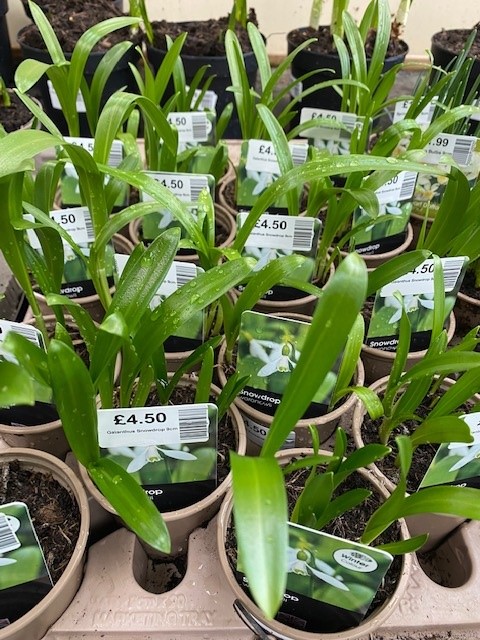
February …
… can be a bustle of activity as everything starts to warm up, bulbs start to flower, weeds start to grow and the ground starts warming up again for planting. Or it can be a period of cold nights and more time to finish the winter jobs in the garden that you haven’t got round to yet.
The winter jobs to finish are mostly pruning of deciduous trees and shrubs: shrub roses are often best to do now just before they start into spring growth. Traditionally, the pruning advice is to cut out any dead, damaged, diseased wood and any weedy stems. Then cut back the healthy stems to an outward facing bud at the height you require.
But if you have a large area or hedge of roses, and not much time or inclination to do each plant individually, they will respond just as well to a general trim using shears or hedgetrimmer.
If you haven’t pruned your fruit trees – apples and pears in particular – then do this now, and if you know anyone who keeps rabbits or guinea pigs, they will appreciate the prunings. Do not prune plums or cherries now though, because they are susceptible to silverleaf disease which is spread through the cut wood; leave these until the summer.
After pruning your fruit trees, you can scatter round small quantities of wood ash from a stove or bonfire to encourage better flowers and fruiting. Alternatively, you can scatter a high potash feed. When feeding mature trees and shrubs, remember the active roots will be underneath the outer edge of the canopy so scatter it in a circle around the plant here – there is no point wasting fertilizer on the area near the trunk.
Autumn fruiting raspberries should be cut down to the ground now too. (Summer fruiting raspberries should be done at the end of the summer after fruiting.)
It’s a good time to do renovation pruning on deciduous shrubs that are too congested or large, and whilst the stems are bare you can look out for diseases such as coral spot or canker and remove any diseased wood. Shrubs which are suitable for this kind of hard winter pruning include Cotinus, Forsythia, Magnolia and Syringa.
After pruning, you should sterilize the blades, using methylated spirits or another sterilizing fluid. This will stop the spread of disease between plants.
 Snowdrops are more successfully planted “in the green” than as dry bulbs. We will have small pots available soon. Now the leaves are off the shrubs, you can notice if there are any bare patches underneath them that would suit some extra bulbs: we have potted daffodils and bluebells which could fill these gaps and will flower this spring.
Snowdrops are more successfully planted “in the green” than as dry bulbs. We will have small pots available soon. Now the leaves are off the shrubs, you can notice if there are any bare patches underneath them that would suit some extra bulbs: we have potted daffodils and bluebells which could fill these gaps and will flower this spring.
Many types of deciduous clematis are pruned early in the year to prevent the plants becoming straggly low down and encourage more shoots. Large flowered plants which flower in May/June such as ‘Nelly Moser’ or ‘Barbara Jackman’ should be cut back to a healthy pair of buds but not too low otherwise flowers will be lost: just enough to tidy them up and get rid of any straggly top growth. Other late flowered clematis (July to October) are also cut back now but hard, down to 15 – 30cm from the ground. These include viticella type clematis and the most reliable shade-flowering clematis of all, Etoile Violette. If in doubt, check the RHS website for clematis pruning advice: www.rhs.org.uk
Christmas Update – The Otter Nursery Our last deliveries will be on Tuesday 23rd December.We will be closed from Wednesday 24th December and reopen
Halloween Word Hunt – Free Family Fun! Join us for a FREE Halloween Word Hunt at The Otter Nursery, running daily from Monday, 27th
Word Hunt Kick-Off at The Otter Nursery. Get ready to try something fun this summer! Inspired by the Women’s Rugby World Cup, our Summer
The Otter Nursery
Murray Road
Ottershaw
Surrey
KT16 0HT